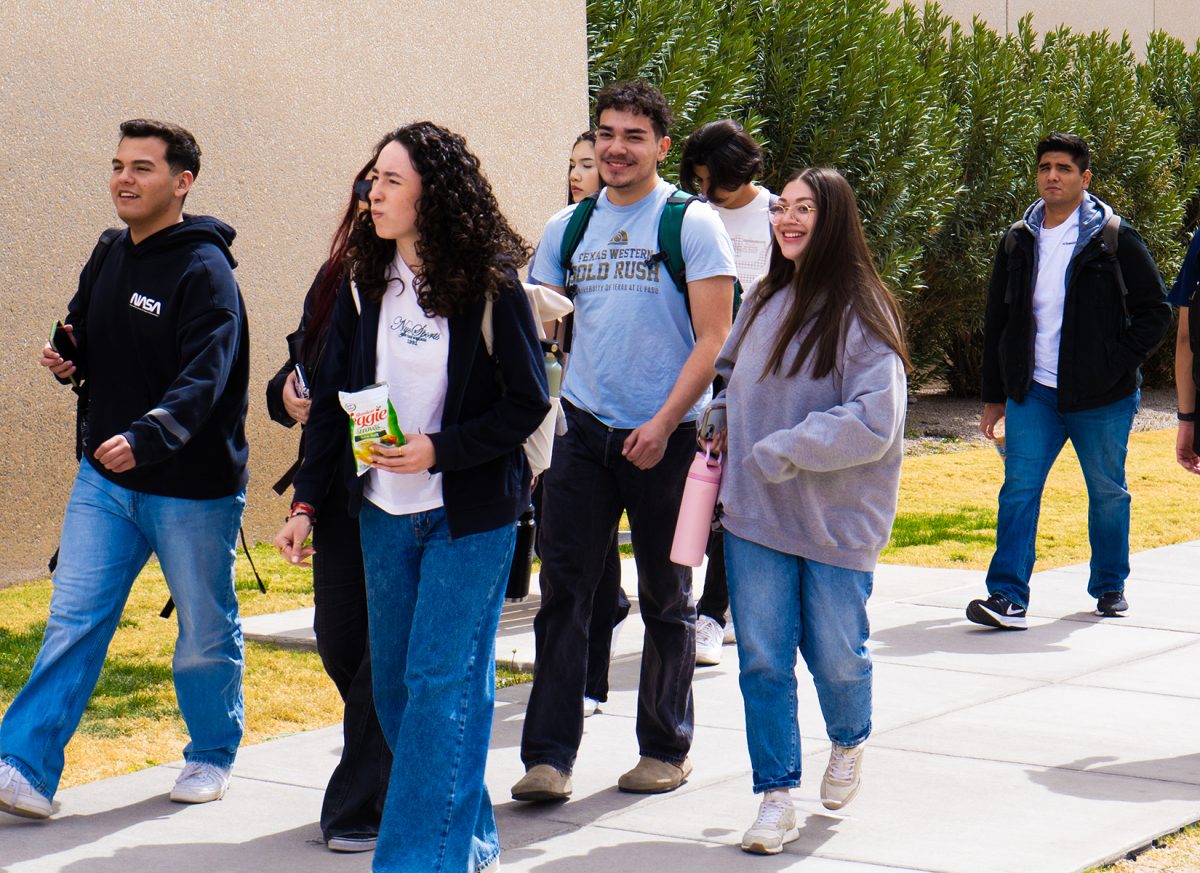Editor’s note: Check theprospectordaily.com for the complete story.
It seems like all anyone can talk—or complain—about is construction.
“It takes me twice as long to get to class now” or “I have to go all the way around campus just to get to Quinn Hall.”
Yet, has anyone stopped to really think about how much time it takes to get to class for someone with a disability?
Whether they have a mental or physical disability, these students are just like everyone else trying to get to their class on time. But whether they are in a wheelchair or use a cane to guide them along the sidewalks, things can get a little tricky.
We’ve all seen how small the pathways are next to the Administration Building. No one wants to be caught in the human traffic jam when classes break, but it is inevitable.
Add someone who uses a walker or has a guide dog to the mix and it is a formula for danger, especially if students don’t dismount their bikes when they are in this area.
According to Bill Dethlefs, director of the Center for Accommodation and Support Services, there are 300 disabled students who are directly impacted by construction.
This means that the only way to reach their class involves going through the construction maze or the construction affects their disability in a harmful way.
For example, a military veteran who has post-traumatic stress disorder can identify as a disabled person by the American Disabilities Act or a disabled student under CASS.
Should a student with PTSD have to be reminded of gunfire while walking through the maze when a jackhammer is going off for construction? Will they feel unsafe as the bulldozers pound away at the cement?
Currently, there are 70 military veterans registered with CASS, Dethlefs said, and most have been afflicted with PTSD. This number increases every year, increasing the need for awareness to help alleviate the stress of these students.
Risks such as these are something that CASS has to anticipate and prepare for beforehand by helping these students register for classes away from the construction zone.
So how can the campus help rid of some of these inconvenient factors for students with and without disabilities?
CASS currently has a partnership with a paratransit system, offering students with disabilities a service of picking them up from their house and dropping them off at the building where their class is located.
If this system had more shuttles available, or was more accessible for students, then those with disabilities could take these shuttles to each of their classes and avoid the construction zone altogether.
However, these services are paid for by the school. Increasing the amount of shuttles or the hours of operation would mean increasing tuition or having the students that are using the shuttles pay for them directly.
Unless UTEP decided to one day stop all campus transformation and end construction for good, students with disabilities will continue to struggle.
Had the campus spaced out transformation projects then maybe it would not be so messy and inconvenient right now.
Sections of the campus could have been closed off and we could have seen a gradual change, instead of entire parts closed to complete the transformation in time for next semester.
UTEP’s firmness in trying to achieve Tier-1 status has affected its students through this trial-and-error mentality. In the process of trying to improve campus life for students with disabilities, officials are causing more stress than necessary.
Many changes still have to take place in order to make campus safe and to meet ADA regulations, such as replacing the underground plumbing that is currently underway by the Administration Building.
Until then, we can only keep a lookout for our peers, both with or without disabilities, and keep each other from getting a headache.
Lorain Watters may be reached at [email protected].








